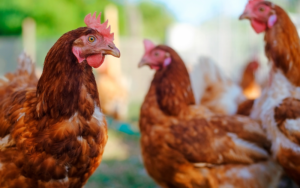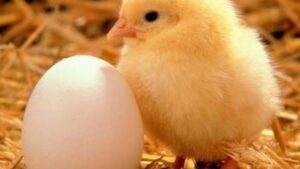
Over the past few decades, poultry farming has become the most dynamic and widespread type of animal husbandry in the world. Chickens, the main link in this industry, have gone far beyond traditional subsistence farming and have become the main source of animal protein for billions of people. Experts Club analysts have studied global changes in chicken breeding between 1990 and 2023, recording unprecedented growth and structural transformations in the industry.
“Poultry farming has become a symbol of the new consumer economy: fast production, low cost, adaptability to global demand. That is why chicken is replacing other types of meat around the world,” said Maksim Urakin, PhD in Economics and founder of the Experts Club information and analytical center.
In the early 1990s, the total number of chickens in the world was estimated at 10 billion (in thousands of heads). Even then, this figure exceeded the number of any other type of farm animal. However, the real leap forward took place in 2000–2020. By 2023, the total number of chickens in the world exceeded 29 billion, i.e., it almost tripled in three decades. This means that there are approximately 3.6 chickens per person on the planet, considering the total world population of over 8 billion.
This explosive growth can be explained by several key factors. First and foremost is economic efficiency. Chicken is the cheapest meat to produce, requiring significantly less feed, water, and time to raise than pork or beef. In the context of global urbanization, rising incomes, and changing eating habits, chicken has become a “universal” product: it is consumed equally in the US, Brazil, India, Indonesia, and Egypt.
In addition to economics, religious and cultural factors are equally important. Unlike pork and beef, which are restricted in consumption due to religious prohibitions in Islam, Judaism, and Hinduism, chicken is acceptable in almost all traditions.
This makes it a globally universal source of protein. “Chicken is a compromise protein. It is acceptable everywhere, inexpensive, quick to process, and that is why it has become the standard of the 21st century,” Urakin emphasized. Technical innovations play an equally important role.
From the 1990s to the 2020s, the poultry industry has undergone a technological revolution: automated incubators, genetically improved broilers, controlled growing conditions, biosecurity, and strict quality monitoring have become the norm in large agricultural countries. This has significantly increased the industry’s productivity. On average, the cycle of raising a broiler to market size has been reduced from 70 to 42 days.
Geographically, the largest chicken producers are China, the US, Brazil, India, Indonesia, and Russia. At the same time, African countries are experiencing rapid growth in domestic production, focused on both food security and reducing dependence on imports.
However, the growth dynamics of the livestock population also carries risks. The increasing density of chicken farming creates an increased epidemiological burden, which is particularly evident in the form of outbreaks of avian influenza. In addition, critics point to animal welfare issues, excessive use of antibiotics, and methane emissions from poultry farms.
“Modern poultry farming must find a balance between productivity and society’s ethical requirements. This is a new challenge that the industry has not faced before,” said Maksim Urakin.
In the coming years, further growth in chicken consumption is expected, particularly in low-income countries, as well as an expansion of exports from Brazil, Thailand, and Ukraine. However, alternative proteins — plant-based and cell-based products already entering the market — may pose increasing competition to poultry farming.
For a more detailed overview of trends in poultry farming and graphs showing changes in livestock numbers, see the video on the Experts Club YouTube channel.
agroanalytics, chickens, EXPERTS CLUB, global livestock farming, poultry farming, МАКСИМ УРАКИН

Ukrainian poultry products have entered the market of the Sultanate of Oman, it is already the ninth market opened by Ukraine since the beginning of 2025, said the chairman of the State Service for Food Safety and Consumer Protection (Gosprodpotrebsluzhba) Sergiy Tkachuk.
“Already the ninth new export market opened this year – Ukraine has received permission to supply meat, by-products and other poultry products to Oman. This became possible after the harmonization of veterinary requirements and the form of the certificate between the competent authorities of both countries,” he wrote in Facebook.
Tkachuk emphasized that the opening of the market of the Sultanate of Oman is another significant step in expanding Ukraine’s export opportunities and the result of systematic cooperation between the State Consumer Service, the Ministry of Foreign Affairs, the Ministry of Economy and the Ministry of Agrarian Policy and Food and diplomatic institutions.
“Together we continue to open new horizons for Ukrainian agricultural exports. From now on, Ukrainian producers can supply products that meet the veterinary and sanitary requirements of Oman, taking into account the conditions of production, processing, transportation, packaging and labeling,” – said the chairman of the State Consumer Service.
He added that the form of the certificate is available on the website of the State Consumer Service.